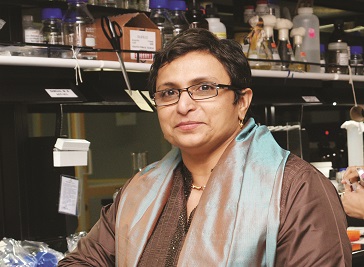Crystal ball Gazing 2015: Avesthagen
January 21, 2015 | Wednesday | Views | By BioSpectrum Bureau
Crystal ball Gazing 2015: Avesthagen
Dr Villoo Morawala-Patell, founder and CMD, Avesthagen
 Achieving predictive preventive and personalized healthcare via the convergence of food, pharma and population genetics has been the mantra of Avesthagen since a decade.
Achieving predictive preventive and personalized healthcare via the convergence of food, pharma and population genetics has been the mantra of Avesthagen since a decade.
We are glad to see that the biotech industry across the world are moving towards this goal in their own ways. We believe that this trend is going to continue for the next several decades. 2014 has been an eventful year for Avesthagen. We are in the process of restructuring the company, and see that as the way ahead for resurgence. We are in several important negotiations for our biosimilars, algal DHA and other bioactives for metabolic disorders, as well as for The Avestagenome. Two of our biosimilar molecules, AVDESP and AVENT, are moving to clinical trials, and three of them are ready for preclinicals.
These are our immediate priorities. Given the increased urbanization in the country, the pressure on land and water resources are increasing. Our technology for Environment Adjusted Crops with increased drought and tolerance and salinity tolerance, would thus be one of the solutions to deal with this problem.
Our vegetarian DHA, an omega-3-fatty acid, from an algal source, and other Functional Foods would also be moving into the market. We expect to complete the analysis of a few Parsi genome sequences. That would give us major insights into new SNPs and variations within this endogamous community.
We are also in discussions with a few international organizations for collaboration on specific aspects of The Avestagenome project. There are two major related challenges that the industry currently faces. One is the tight noose of compliance and regulatory requirements that make progress debilitating. The other is the availability of funding. In both cases, the norms of the software Industry which deals with mainly services, is applied to innovative research and product development in the lifescience Industry.
This makes it counterproductive, since the two industries, the required funding and the outputs, and especially the timelines are hugely very different.
It is very important that the government takes steps to ease regulations and compliances, gives incentives to the innovative lifescience research to boost the industry and make us internationally competitive.
In India, the sector comprises of Pharma companies making generic drugs, and Biotech/lifescience that deals with innovation and services. The pharma sector is 40-60 years old and is well established. They will continue to perform well. Biotech/lifesciences, on the other hand, is relatively new, and is still trying to find its foothold. Unless adequately supported by the government in terms of relaxing regulatory and compliance requirements, and ease of obtaining funding, their performance is likely to see meagre progress.



 Achieving predictive preventive and personalized healthcare via the convergence of food, pharma and population genetics has been the mantra of Avesthagen since a decade.
Achieving predictive preventive and personalized healthcare via the convergence of food, pharma and population genetics has been the mantra of Avesthagen since a decade. 






